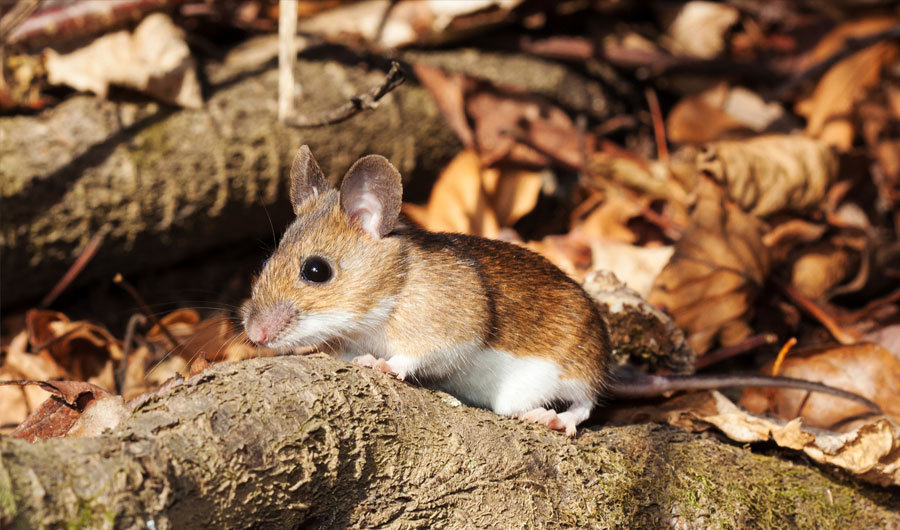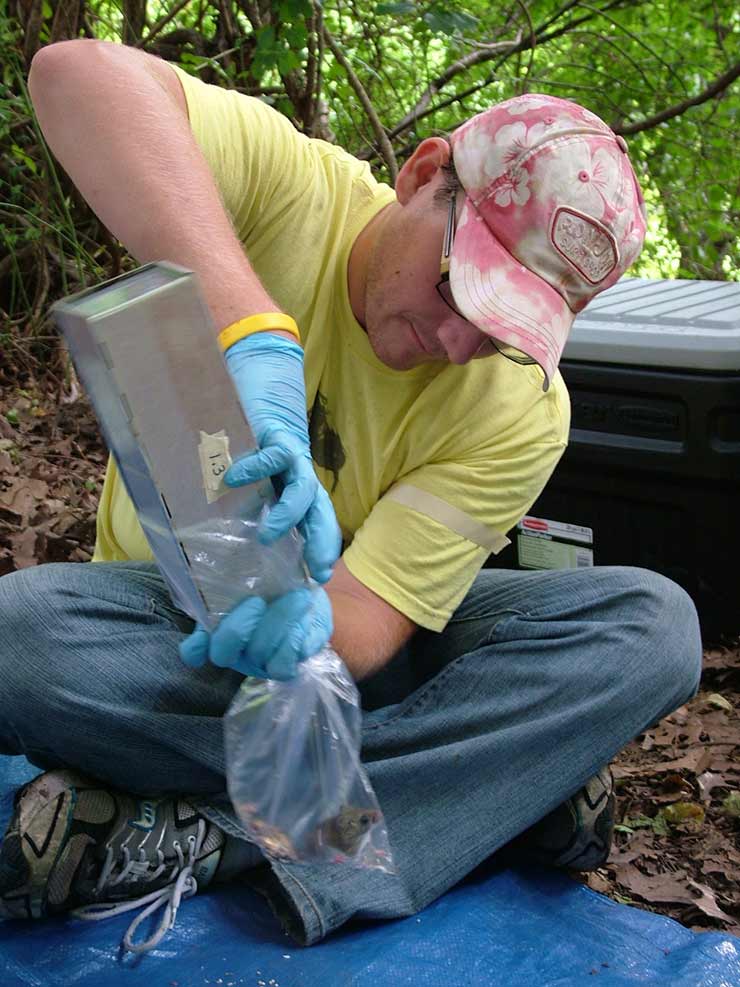Mice in New York Are Likely Evolving to Eat City Food

Szasz-Fabian Jozsef via Shutterstock
(Inside Science) -- When Europeans settled in North America, they brought with them the common house mice and brown rats that had plagued Eurasian cities for centuries. But while these introduced rodents were well suited to city life, the mice native to America were not -- at least, not at first. Now, a golden-furred native called the white-footed mouse has reclaimed Manhattan Island, apparently thanks to genetic adaptations that let it thrive in urban habitats. Some of those adaptations may be changing how the mice metabolize food.
Most white-footed mice apparently died or were pushed out when New York City arose, according to previous genetic research by Stephen Harris, an evolutionary biologist at Purchase College, State University of New York. But despite the native mice’s earlier struggles, they are now abundant in parks and green spaces throughout the city, said Harris.

Stephen Harris extracts a mouse from a trap in Queens, New York
Courtesy of Olga Lavinda
For the new study, Harris and his colleague Jason Munshi-South of Fordham University in New York trapped white-footed mice in three New York City parks, and also in three natural areas about 60 miles from the city. They clipped the tail tips from eight mice at each location, then analyzed the portions of the mice's genomes that are actively expressed and used to make proteins.
When populations are separated from each other, random variation will naturally cause them to drift apart genetically, even if they aren't adapting to anything in their environments. To separate the influence of random drift from active adaptation, the researchers looked for genetic differences between urban and rural mice that were too extreme to be explained by drift alone. This let them zero in on 19 gene variants that had been spreading rapidly through urban populations, suggesting that the variants offered some advantage in the new habitat. The gene variants were positively associated with human density and the amount of impenetrable surfaces like concrete around the mice's habitats -- clear evidence that the mice were adapting to urban life, the researchers reported this month in Molecular Ecology.
The white-footed mice's success is encouraging from a conservation perspective, since the urban mice were starting with a limited gene pool -- only half the genetic diversity of country mice, noted Max Lambert, an urban ecologist and doctoral candidate at Yale University in New Haven, Connecticut, who was not involved in the study. Wildlife populations often lose genetic diversity when their habitats are sliced into small patches by human development. Since genetic diversity is the "raw material" species use to evolve, conservationists often worry that such fragmented populations will lose their ability to adapt to new challenges.
"Despite having reduced genetic diversity, these mice are actually showing pretty substantial evidence that their genomes have undergone multiple lines of natural selection to living in New York City," said Lambert. "That gives us some good hope that maybe some species -- not all, but some -- can actually evolve to cope again with our increasing impacts on the landscape."
Many of the 19 mutations were in genes that affect how mice metabolize fats and carbohydrates from food. This could indicate that the mice are adapting to eat human garbage, an idea Harris calls "the cheeseburger hypothesis." Alternatively, said Harris, urban mice may have more natural seeds and fruits available to them, since New York City has no deer to eat the underbrush.
More research will be needed to confirm that urban mice really do digest food differently, as well as to find out what those differences are, noted Harris. As a first step, he plans to trap mice and collect the droppings they leave in the trap overnight, then analyze the droppings using DNA barcoding to see what the mice have been eating.
Together with other recent studies on the same mouse populations, the new research provides one of the first known examples of a mammal adapting to urban habitats, said Harris. White-footed mice can join the classic example of the peppered moth, which evolved dark coloring to match surfaces blackened by industrial pollution. Other examples include a fish in New England that is evolving resistance to PCB pollution, as well as a weed in Europe that is evolving to drop its seeds into sidewalk cracks rather than letting them float out over the street.
Urban evolution is a field that's "about to explode," according to Jonathan Losos, an evolutionary ecologist at Harvard University in Cambridge, Massachusetts, and author of a recent book on the evolving science of evolutionary biology, who was not involved in the study. In the past, he said, researchers viewed natural selection as a slow process, so they didn't expect to see many species adapting to our relatively new urban environments. But more recently, researchers have found that some species can adapt quickly when selective pressures are strong.
"I think the assumption has been that the organisms that live in cities are the ones that happen to have the adaptations that let them get by there. They come to cities prepared to live in them," said Losos. "The expectation really should be that they're adapting to live amongst us."

